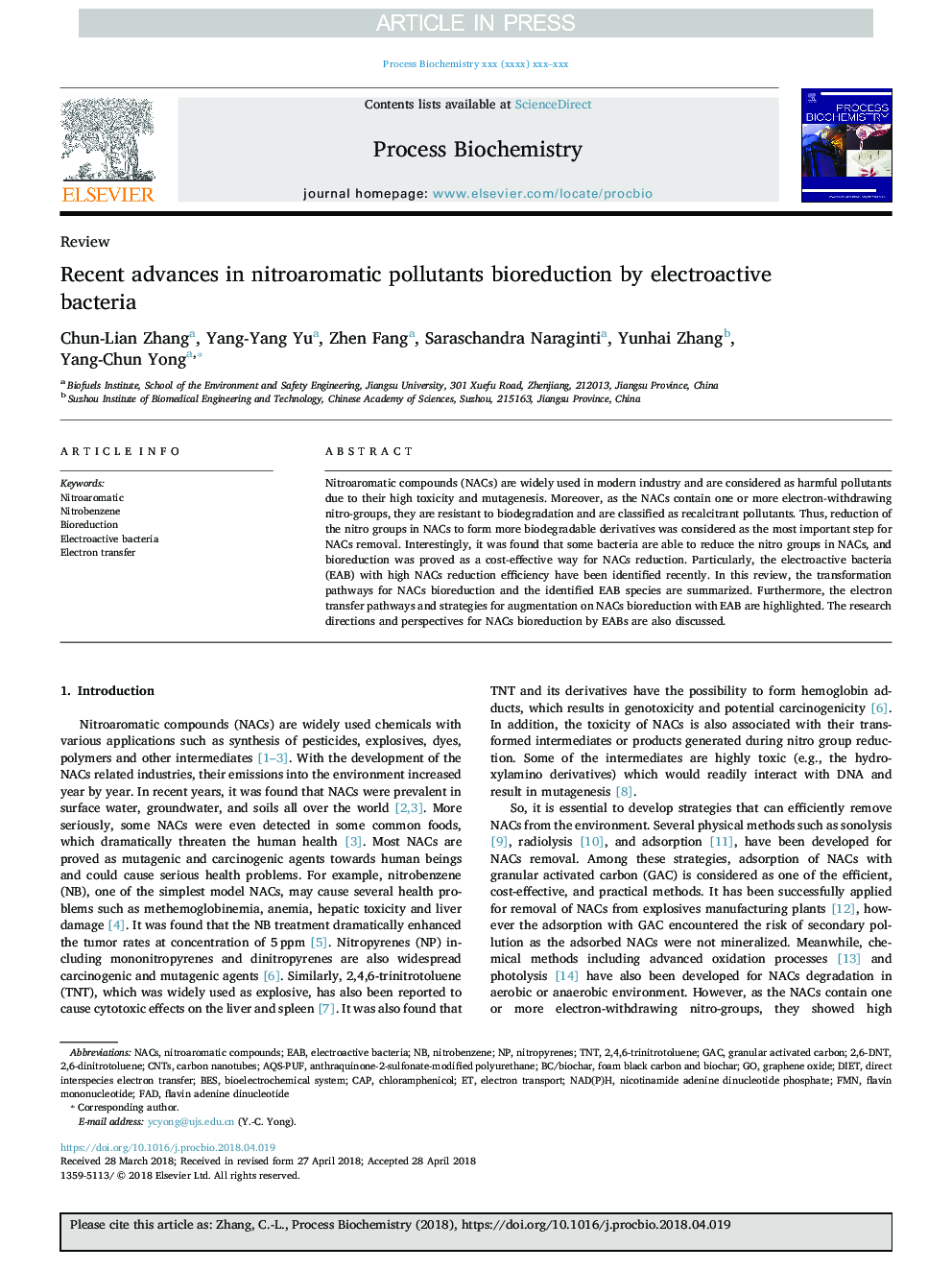| Article ID | Journal | Published Year | Pages | File Type |
|---|---|---|---|---|
| 6495086 | Process Biochemistry | 2018 | 7 Pages |
Abstract
Nitroaromatic compounds (NACs) are widely used in modern industry and are considered as harmful pollutants due to their high toxicity and mutagenesis. Moreover, as the NACs contain one or more electron-withdrawing nitro-groups, they are resistant to biodegradation and are classified as recalcitrant pollutants. Thus, reduction of the nitro groups in NACs to form more biodegradable derivatives was considered as the most important step for NACs removal. Interestingly, it was found that some bacteria are able to reduce the nitro groups in NACs, and bioreduction was proved as a cost-effective way for NACs reduction. Particularly, the electroactive bacteria (EAB) with high NACs reduction efficiency have been identified recently. In this review, the transformation pathways for NACs bioreduction and the identified EAB species are summarized. Furthermore, the electron transfer pathways and strategies for augmentation on NACs bioreduction with EAB are highlighted. The research directions and perspectives for NACs bioreduction by EABs are also discussed.
Keywords
nitropyrenesNitroaromaticFMNflavin adenine dinucleotideGACNACsBESEAB2,6-DNTCNTS2,4,6-Trinitrotoluene2,6-dinitrotolueneNAD(P)Helectron transferElectron transportGraphene oxideelectroactive bacteriaFADBioreductionnitroaromatic compoundsTnTDietbioelectrochemical systemflavin mononucleotideDirect interspecies electron transferCarbon nanotubesnitrobenzenenicotinamide adenine dinucleotide phosphateGranular activated carbonCaPChloramphenicol
Related Topics
Physical Sciences and Engineering
Chemical Engineering
Bioengineering
Authors
Chun-Lian Zhang, Yang-Yang Yu, Zhen Fang, Saraschandra Naraginti, Yunhai Zhang, Yang-Chun Yong,
